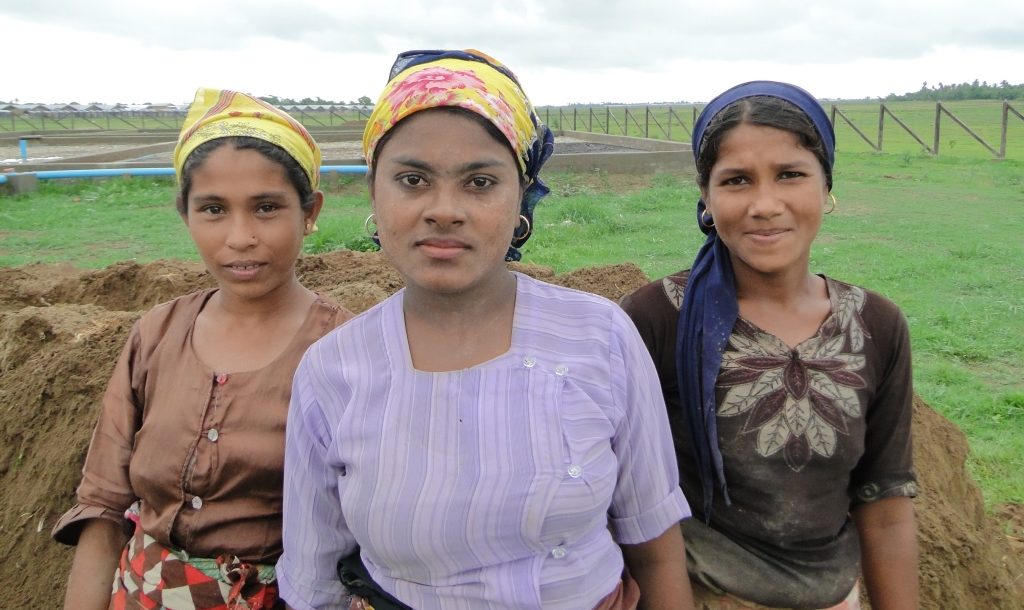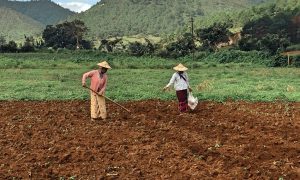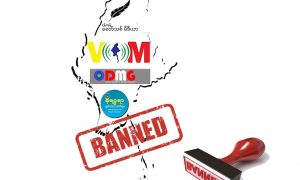As the battle against COVID-19 rages in Malaysia, a new population has become collateral damage: Rohingya refugees. A terrified public, instigated by political opportunists, has endorsed numerous anti-refugee online petitions that have gained well-distributed support across Malaysia’s ethnic spectrum. Although Malaysia once embraced these survivors of Myanmar’s genocidal regime, Rohingya refugees are now being called ungrateful, uncivilised and backward leeches. This public outcry has led to mass support for Malaysia turning away boats carrying Rohingya asylum seekers. Given that many Malaysians assume that all refugees from Myanmar are Rohingya, the petitions have supported Malaysia’s detention of thousands of undocumented migrants—even those holding UNHCR registration cards—whose fates are unclear.
Perceptions of Rohingya refugees as indolent and, more recently, as virus carriers emerge from simplistic discursive representations that materialise from and circulate far beyond Malaysia. A number of entities unwittingly mutually reinforce reductive depictions of Rohingya. Myanmar nationalists vehemently deny that Rohingya belong to the polity, since the latter are perceived to be different—Rohingya “look South Asian” and are Muslims in a Buddhist country. International media have incentives to tell (and sell) simple stories, while humanitarian agencies achieve efficiencies in aid delivery when they can treat every Rohingya as a replicable token of a common type. Rohingya elites themselves have reason to present a common and distinct Rohingya identity, as this contests the Myanmar state’s assertion that the Rohingya are simply interlopers from Bangladesh (“Bengalis”).
In the academic world, fieldwork with Rohingya documents significant internal differentiation. But this reality has been obscured by the lack of sustained study of the group, particularly because northern Rakhine (Arakan) state, the area to which Rohingya are indigenous, has been largely inaccessible to researchers. Academics have mostly only considered elite debates or recapitulated stories of misery in Burma.
The creation of a homogenous image of Rohingya obscures the ethnic community’s striking diversity: Rohingya do not share an identical dialect, do not all look the same, nor are even all Muslim. Such diversity is unsurprising—homogenous groups tend to be maintained only through coercion and control. Given the Myanmar state’s claims that Rohingya do not exist, counter-narratives claiming a unified identity also make perfect sense. What is noteworthy are the effects of these claims and counterclaims amid mass violence and dispossession. Those who do not conform to the narrow characteristics which allegedly distinguish the Rohingya are not only excluded from making identity claims, but also the protection afforded to recognised asylum seekers and refugees.
This post draws upon fieldwork in Malaysia, Bangladesh, Thailand and Yangon, Myanmar between 2017 and 2020 to describe processes of Rohingya identity (re)formation amid ethnic cleansing and attempted extermination. We focus on Rohingya elite discourses and the criteria used by humanitarian organisations to grant protections to refugees, to show how both co-produce a reified image of the Rohingya that is then represented in media and academic treatments. The disciplining of ethnic diversity in turn becomes internalised by Rohingya refugees, who self-reinforce the homogenisation of Rohingya identity.
Strategic essentialism
In Myanmar, the ratification of an ethnic group as indigenous is the only method for securing recognition of substantive citizenship. The claim to citizenship rests in turn on the claim to an essential identity uniting the Rohingya. While some Rohingya elites stress the group’s capacious origins and experiences, many self-appointed Rohingya leaders reject expressions of internal difference that might potentially undercut their identity’s supposed authenticity. These Rohingya elites have identified particular religious, linguistic, territorial and cultural indicators to demarcate an “authentic” Rohingya-ness that fits the racial ideology of the Myanmar state: Rohingya are Muslims, speak Rohingya, have their homeland in Rakhine state, and share both agrarian subsistence patterns (fishing and farming) and a village culture defined by segmentary clan-based kinship systems.
There are several problems with this description. The Rohingya have faced a half-century of systematic oppression by the Myanmar state, one that has precipitated waves of violent expulsions complemented by legal and symbolic erasure. It is arguably no longer possible to embody the narrow characteristics listed above. The growing displacement of Rohingya has disrupted clan systems and opportunities to learn language dialects, while severing intimate relationships between subsistence patterns and lands. For instance, the absence of vernacular print or radio hinders the standardisation of a dialect, facilitating evolutions in the Rohingya language (which was already subjected to significant regional variation). Moreover, as the putatively originary elements of Rohingya-ness intermix with host cultures across greater Asia (Saudi Arabia, Malaysia, Bangladesh and Pakistan, in particular), new variations of identity are produced. An essentialised “Rohingya-ness” can no longer be adequately performed.
Even if the mass uprooting of Rohingya had not transpired, such essentialism would still exclude some who identify as Rohingya. For instance, while Rohingya historian Ba Tha asserts that, “All Rohingya profess Islam,” Hindu Rohingya and the tiny but vocal Christian Rohingya community put paid to such blanket assertions. While these are arguably miniscule exceptions, they throw into relief a larger schism between a growing conservative strain of Islam and those Rohingya who espouse a syncretic Islam that blends animism and Hinduism. Some accounts attribute this expanding rift to Saudi Arabian influence, while others describe the increase in conservatism as a self-protective response to growing vulnerability.
Humanitarian narratives
As humanitarian and state apparatuses internalise essentialist definitions of Rohingya-ness, they become sieving machines separating “true” Rohingya from “false”. Rejecting deviant Rohingya experiences, cultural practices and identities is problematic because it denies protection to those with legitimate claims to membership. Humanitarian regulatory processes and state discourses pressure Rohingya to perform and take up the traits that signify an “authentic” Rohingya. State elites such as Malaysia’s Najib and Bangladesh’s Sheikh Hasina have emphasised how Muslim countries must help Rohingya as they are fellow “Muslim brothers and sisters”. Rohingya consequently have an incentive to foreground a Muslim identity to qualify for the support of such states.
Meanwhile the UNHCR compels Rohingya to conform to narrow definitions of Rohingya-ness in order to access the identification documents that provide a modicum of protection in Malaysia. In interviews, Rohingya applicants for refugee status, translators and civil society leaders revealed some non-Rohingya applicants (Bangladeshis or Myanmar Muslims) have attained cards by paying bribes to translators or colluding with Rohingya applicants by “learning things about [Rohingya] areas in Rakhine state and paying to ‘join’ their family,” as one translator told us.
More importantly, Rohingya have reportedly been denied cards by not satisfying the agency’s expectations of ‘authentic’ Rohingya-ness. Cards have been allegedly refused to applicants who were deemed too educated, could not adequately relay geographical knowledge of Rakhine state or describe details about political events (pogroms against Rohingya, for example), or could not speak in the same Rohingya dialect as the UNHCR translator. Insistence on these qualities would particularly disadvantage Rohingya who spent most or all of their lives outside of Rakhine state.
Rohingya applicants rehearse the narratives of those who have successfully attained refugee status to prepare for the UNHCR interview. Kamal, a Rohingya who came to Malaysia through Bangladesh and Thailand in 2016, shared that: “My relative told me the questions the UNHCR asked. I practiced how to answer them with my relative, and I learnt some of the answers he gave so that I could be guaranteed success in getting the UN card.” The perceived need to “tell the same story” for fear of being denied refugee status reinforces the homogeneity of Rohingya-ness as an ethnic category, putting in doubt all narratives that stray from the dominant one.
Many who now see themselves as Rohingya only came to do so after the violence of the last decade, or from interacting with humanitarian agencies or host states—some had not even heard the name before. Hasinah, an older woman who fled Rakhine after the 2015 conflict, shared that she had only thought of herself as a Myanmar Muslim back in Sittwe. The discovery of her Rohingya identity took place when the UNHCR officer told her that she was Rohingya: “I only [learned] in Malaysia that because we are Rohingya, that’s why Myanmar wanted to kill us. Before this [back in Myanmar], I only thought it was because we are Muslims, and Buddhists hate Muslims.”
These experiences demonstrate how some Rohingya have begun to understand themselves through the parameters they encounter during state registration processes. They also show how the Rohingya category is enlarged by the incorporation of those who had not seen themselves as Rohingya before. Hasinah’s testimony reflects a shift in her identity, and how she relates to her world. In explaining the violence in Myanmar, her Rohingya identity becomes foregrounded over her general Muslim one. Hasinah’s experiences do not imply that all Rohingya were unaware of their ethnic identity or the basis of their persecution. Instead, narratives such as Hasinah’s reveal the diversity in Rohingya’s perspectives. They also point to the growing solidification of Rohingya-ness—to be Rohingya is also to be Muslim, thereby excluding the marginal voices of non-Muslim Rohingya.
Embracing Rohingya diversity
“Those are Myanmar Muslims and Bangladeshis. Not Rohingya,” so declared a Malaysia-based Rohingya refugee in a May 2020 Facebook post, at pains to distinguish the Rohingya community from other refugee groups in Malaysia. If Rohingya were not already compelled to differentiate themselves, the COVID-19 pandemic has both produced and made more pronounced distinctions between Rohingya and other migrant communities. Adding to the pressure from humanitarian and state apparatuses, societal acceptance—and rejection—of Rohingya in Malaysia have led to the growing need among Rohingya refugees to present themselves as a docile subjects deserving of protection.
Allowing for alternative performances of Rohingya-ness not only allows for a broader and more complex understanding of Rohingya to emerge—a good in its own right. It accomplishes two additional goals. First, embracing Rohingya diversity forms a stronger basis for the articulation of collective political aspirations. The tactic of strategic essentialism has not worked due to the Myanmar state’s persistent denial of Rohingya as “inauthentic.” Embracing Rohingya diversity, by contrast, recognises their various complex historical and cultural entanglements with Rakhine state and Myanmar in general.
Second—and arguably more importantly for a stateless group of people who have been denied belonging and a homeland—flattening Rohingya-ness inevitably prevents many “deviant Rohingya” from claiming a name that has been denied by the Myanmar state. For some, the Rohingya identity is the only thing they have left. The Rohingya identity is a crucial aspect of their existence. A more fluid understanding of Rohingya—one that both allows more people to enter and more people to exit, but also permits people to inhabit both positions at once—would better reflect the immense challenges of living as Rohingya today.
 Facebook
Facebook  Twitter
Twitter  Soundcloud
Soundcloud  Youtube
Youtube  Rss
Rss 


